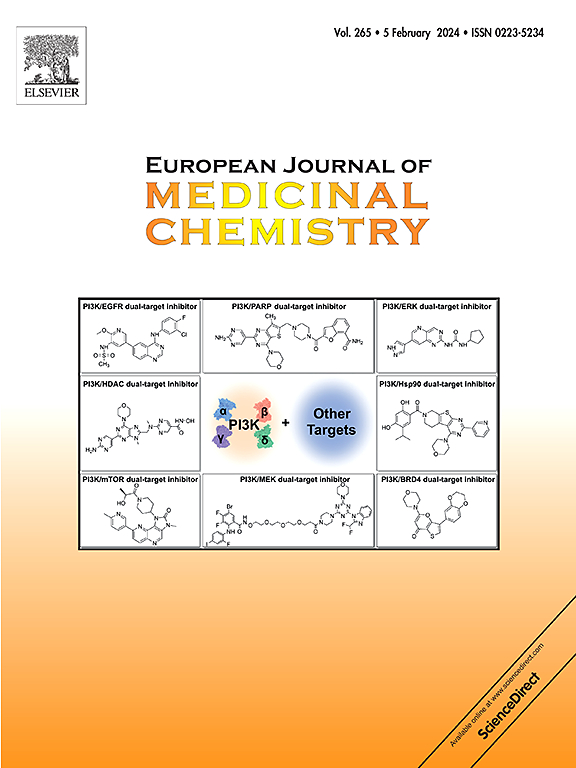Semisynthesis and biological evaluation of 17-hydroxybrevianamide N derivatives as anti-inflammatory agents by mediating NF-κB and MAPK signaling pathways
IF 6
2区 医学
Q1 CHEMISTRY, MEDICINAL
引用次数: 0
Abstract
Chronic inflammation is a trigger for many diseases that affect approximately 10–20 % of the population around the world. Herein, (±)-17-hydroxybrevianamide N (1) was isolated from the fungus Aspergillus sp. (CHNSCLM-0151) and exhibited strong inhibitory activity against nitric oxide (NO) in lipopolysaccharide (LPS)-induced RAW264.7 cell. A series of new derivatives (±)-3−(±)-29 was semisynthesized by structural modification of the imide, phenolic hydroxyl, and carbonyl groups from the natural product (±)-1. The results of anti-inflammatory activity demonstrated that (±)-4, (±)-6, (±)-9, (±)-22, (±)-23, and (±)-24 exhibited obviously NO inhibitory (P < 0.0001) in LPS-stimulated RAW264.7 cells. To further investigate the relationship between chirality and activity, the enantiomers of the above six compounds were obtained by chiral resolution. As expected, the bioactivity results indicated stereoselectivity in the anti-inflammatory effect among the different isomers. In particular, compound (+)-4S-23 inhibited NO concentration with an IC50 value of 0.5 μM, demonstrating 3-fold greater potency compared to its (R)-enantiomer, and achieving 40-fold superior potency over the positive control NG-monomethyl-l-arginine (L-NMMA). This compound demonstrated suppression of TNF-α (25.7 ± 1.5 %), IL-6 (54.5 ± 3.9 %) and IL-1β (92.9 ± 4.1 %) production at 2 μM. More importantly, mechanistic investigations revealed that (+)-4S-23 (0.2 μM) modulates the MAPK signaling pathway, specifically downregulating phosphorylation of p38, ERK, and JNK. Furthermore, (+)-4S-23 also exhibited potent inhibitory activity against the NF-κB pathway by suppressing the phosphorylation of IκB-α and blocking nuclear translocation of phosphorylated p65. Notably, these findings position (+)-4S-23 as a promising candidate for development as a novel anti-inflammatory therapeutic targeting both MAPK and NF-κB signaling nodes.


求助全文
约1分钟内获得全文
求助全文
来源期刊
CiteScore
11.70
自引率
9.00%
发文量
863
审稿时长
29 days
期刊介绍:
The European Journal of Medicinal Chemistry is a global journal that publishes studies on all aspects of medicinal chemistry. It provides a medium for publication of original papers and also welcomes critical review papers.
A typical paper would report on the organic synthesis, characterization and pharmacological evaluation of compounds. Other topics of interest are drug design, QSAR, molecular modeling, drug-receptor interactions, molecular aspects of drug metabolism, prodrug synthesis and drug targeting. The journal expects manuscripts to present the rational for a study, provide insight into the design of compounds or understanding of mechanism, or clarify the targets.

 求助内容:
求助内容: 应助结果提醒方式:
应助结果提醒方式:


